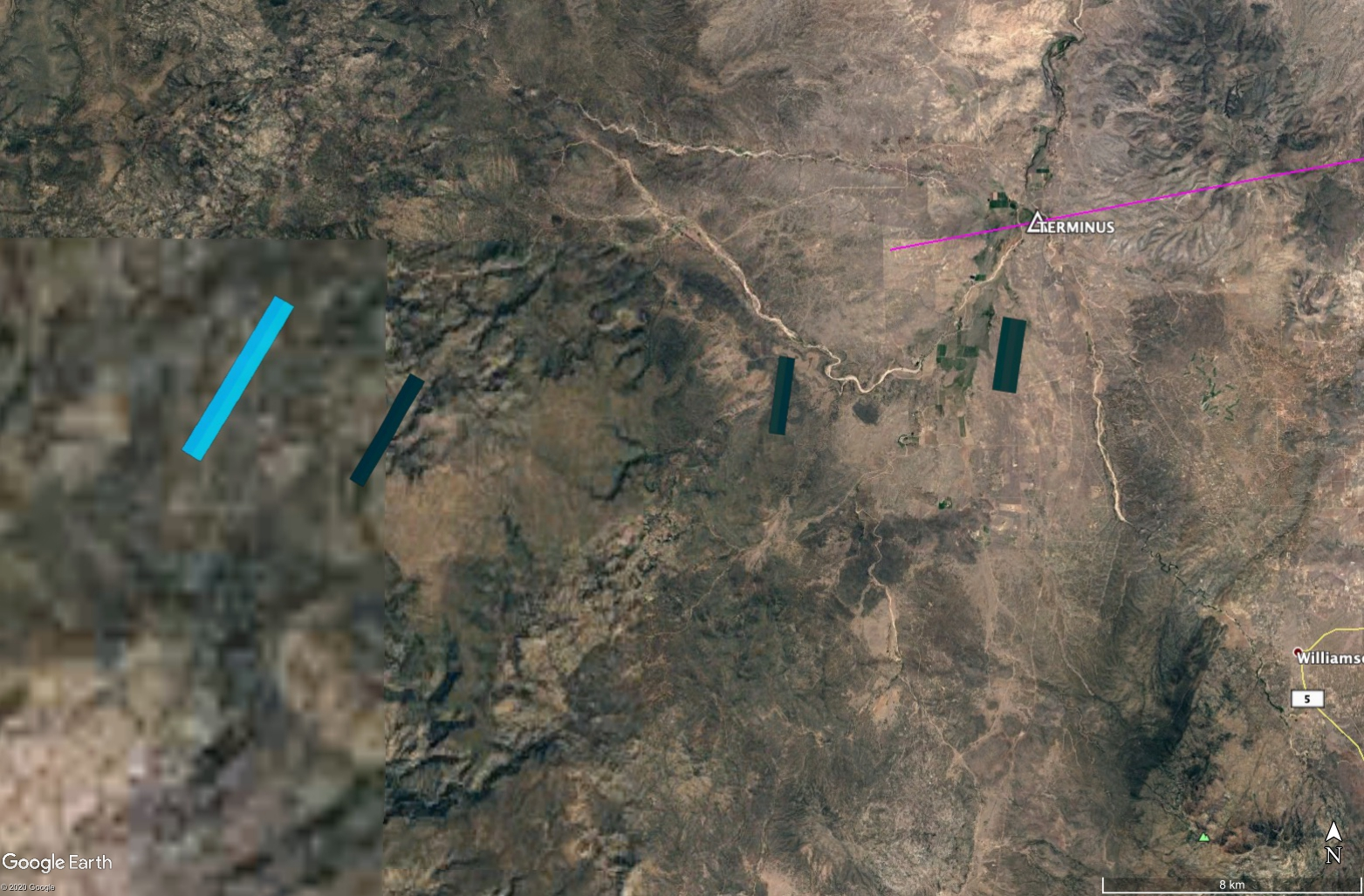DATE/TIME2/16/2020 @ 14:17 UTC2/16/2020
|
LAT/LONG34.717562 • -112.747969
34.717562
|

This event was a probable meteorite fall that occurred at 7:17:29 AM local time on 16 Feb 2020, or 16 Feb 2020 14:17:29 UTC. Events are recorded as “probable” if they produce well-defined signatures of a meteorite fall in weather radar imagery at the time and place described by eyewitnesses, but no meteorites have been recovered from the event to date. The fireball was an especially loud daytime bolide which left a lingering smoke trail. Sixty-nine eyewitnesses reported it to the American Meteor Society across Arizona. Eight eyewitnesses reported hearing sonic booms from the falling meteorites. Radar evidence of the fall is sparse, but the few radar signatures found provide reasonable evidence that a fall occurred based on velocity and other data product signatures.
Meteorites have not been recovered from this event.
This event is recorded as American Meteor Society event number 795 for 2020. Signatures of falling meteorites can be found in imagery from one nearby weather radar with certainty, and possibly from two more. In the NEXRAD weather radar network operated by NOAA, the KFSX (Flagstaff, AZ) and possibly the KESX (Las Vegas, NV) and KIWA (Phoenix, AZ) radars record signatures of falling meteorites.
The first appearance of falling meteorites on radar occurs at 14:18:58 UTC and 16,400 m above sea level (ASL) in the 1413 UTC data set for the KFSX radar in the 3.12 degree elevation radar sweep. Signatures consistent with falling meteorites appear in a total of possibly seven radar sweeps from the three radars, with a final signature appearing at 14:38:40 UTC. This final return appears a full twenty minutes after the event and may be fine dust.
